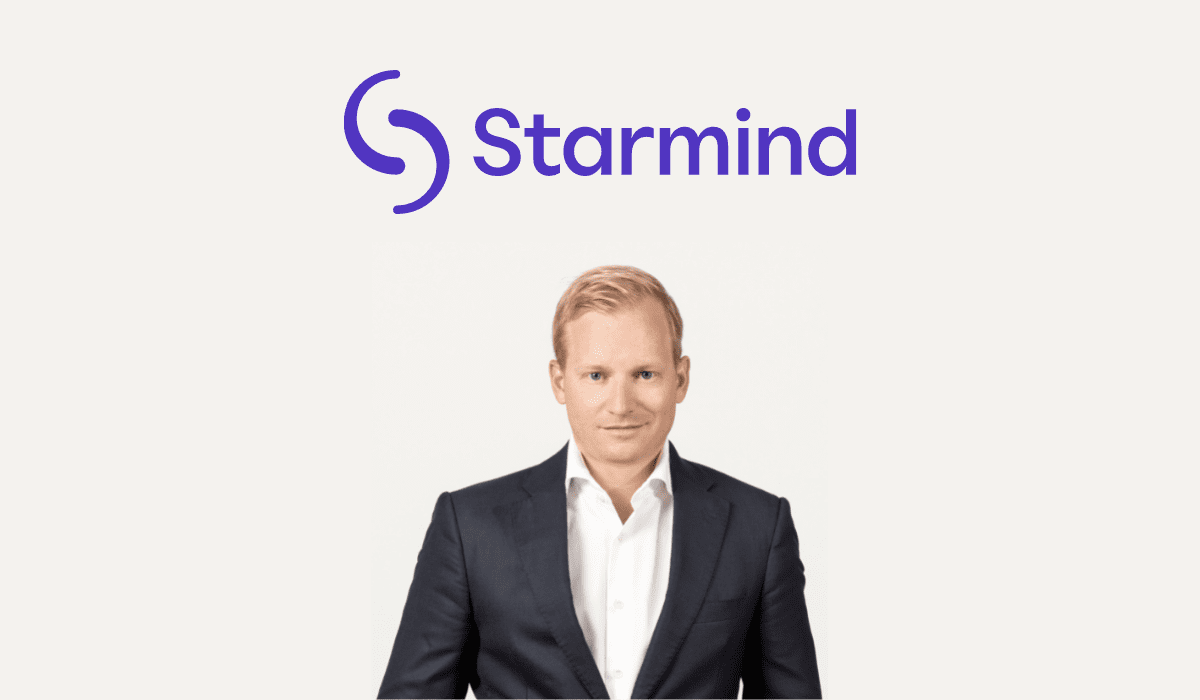Contents
First published by One Million by One Million Blog, in a 4 part series. Sramana Mitra, technology entrepreneur and strategy consultant in Silicon Valley, interviews Starmind CEO, Marc Vontobel to better understand his organization, their product, the technology, and how they are changing the way people work and stay connected.
Marc is yet another techie who has made a successful transition to being an entrepreneur.
In this interview, he discusses his journey, as well as a lot of the nuances of positioning his venture, Starmind, for success.
Sramana Mitra: Let’s start by introducing our audience to yourself as well as to Starmind.
Marc Vontobel: I’m the Co-Founder and CEO of Starmind. I have a background in Computer Science specializing in AI. That’s also the origin of Starmind. I met my co-founder at the artificial intelligence laboratory in Zurich. We were supposed to work on humanoid robots, and we were totally lost. The initial idea of Starmind came up to build an eBay for knowledge.
Instead of learning all the different disciplines ourselves, we envisioned having a platform where we can ask any question and put a price tag on it. That’s how Starmind started. The problem was it was a one-sided market. No one really wanted to pay a colleague for their knowledge. It took us some time to understand that what we have built is actually solving a much bigger problem that every large organization faces.
There is so much knowledge in a large organization that it’s very hard to unlock that for an individual employee without knowing their colleagues. We pivoted into the B2B world and built the platform that constantly learns, on its own, who knows what about what. If you have a question and don’t know who to ask, Starmind will find that for you. In 95% of cases, you get a solution very quickly.
Sramana Mitra: Your background is pure technical?
Marc Vontobel: I did study economics as well.
Sramana Mitra: Your co-founder is also a computer scientist?
Marc Vontobel: He studied biology.
Sramana Mitra: But neither of your come from a sales or business background. You’re technical people.
Marc Vontobel: Absolutely. We didn’t plan to make a business out of it. In the end, we tried to solve our very own problem of very lost in so many different tricky questions.
Sramana Mitra: This happens a lot. One of the first product ideas that I worked on was based on my own problem. I was trying to do sales. This was the beginning of the internet in the mid-90s.
One of the first problems I had to deal with was whom to sell to, so prospecting and lead qualification problems. I came up with an AI product idea to solve the problem of lead generation and lead qualification. This was, of course, a little bit early in the history of the internet.
It was the end of 1997 when I came up with this idea. The data was not as rich, but we did build a business. We had customers and venture capital. My point is going back to how technical people come up with product ideas. It’s often from problems we encounter in regular life.
Marc Vontobel: I would agree. Starmind is not the first company I founded. It was always a problem I wanted to solve. I didn’t find the right tool or product to do so.
This segment, posted on Tuesday, May 24th 2022, is part 2 in the series : Thought Leaders in Artificial Intelligence: Starmind CEO Marc Vontobel (Part 2)
Sramana Mitra: Coming up with the product idea is one thing, but productizing and building a business is quite a different thing. This is where, I think, you made a choice of going the B2C route. You pivoted to B2B where you found more success. What was your experience of the business side of it? How did you learn what you needed to learn?
Marc Vontobel: First of all, a big mistake a lot of founders do at the beginning is to believe that the first idea is to be proven right. In many cases, the first idea may be the spark. The more you talk to people, you figure out it wasn’t exactly the right thing. You have to listen and open up.
Then there comes a point in time where you see that it’s creating value for the customer. If you want to repeatably grow, you have to stick with something. You can’t go too broad. You can’t go into the market with lots of different ideas and say yes to everything.
Starmind is a technology where that mistake can happen easily. Almost everyone can think of a use case on how to use it. My mom used to be a teacher. When I explained to her what we are doing, she said, “We need that in our school as well.” There are opportunities everywhere. You’ve to learn how to say no but, at the same time, to listen to the market and customer.
Sramana Mitra: One of the things that we teach very extensively is positioning – this process of saying no to things, figuring out what segment you want to go after, how you are going to package and price, what is the competition. My conclusion is that you have to learn to position. Otherwise, you can never flesh out a product idea in a meaningful way.
Marc Vontobel: I couldn’t agree more. If you can learn that upfront, that’s even better than learning it the hard way.
Sramana Mitra: You and I learned it the hard way. The market was so new and the internet was just coming. We were figuring things out on the job. Today, there is no excuse for not learning it upfront. This is where case studies really help. You figured out you were going to do the B2B route. What use cases were coming up? Where in the enterprise did you penetrate the market and where did you find your early validation?
Marc Vontobel: I’d just like to come back to something you said before. We were very lucky that the moment we pivoted into the B2B space, there was a big buzz around AI. There were lots of CIOs of large organizations trying to figure out how we can induce AI into our company. It doesn’t really matter what the output is. It doesn’t matter what the value is. We now need AI to be modern. That helped us a lot because we haven’t had our positioning clear yet.
This segment, posted on Wednesday, May 25th 2022, is part 3 in the series : Thought Leaders in Artificial Intelligence: Starmind CEO Marc Vontobel (Part 3)
Marc Vontobel: Without having very good positioning, we already created traction and signed some big deals with some Fortune 500 companies. That helped us find out the real use cases where we can have a real impact on the business. If you buy Starmind without having a clear use case in mind, you always depend on the vision of the buyer. We have found a few of those, but it’s not repeatable.
Sramana Mitra: That’s a very rare buyer who can take a technology and find an application for it. That’s not the way to build a company at all.
Marc Vontobel: And the buyers came in all forms and shapes – from a very modern progressive CIO to a digital transformation manager. You have to spread the word broadly that you cannot do that efficiently. In the beginning, the AI hook helped us create traction without knowing what the actual use case is.
Afterward, we found out that we have three main use cases where Starmind makes a lot of sense. One is in R&D. One of our big customers is Novartis. They use Starmind to develop new medicine. Every single day, they release a new medicine and that’s millions more in profit. There is a clear link to the business outcome. It makes sense to have a huge internal expert network where you can just find the right answer from outside of your department. That’s not just for pharma. CPG also has big R&D departments. That’s probably the most related to our origin.
The second one is in sales. If you work in a professional services company, you have to answer to all of those RFPs. Normally, what we see is these large organizations like Cognizant and Deloitte have large country entities.
Everything that you have already done in the country, you might find that knowledge internally. Everything that happens outside of your geography is very hard to tap into. To be a part of an RFP process where the response team is able to quickly tap into the experience of people outside of their direct team is something that increases the win rate of RFPs. Increasing the win rate is one of the most important KPIs for companies like these.
The third use case is not one that we found out ourselves. Our customer had outsourced their internal service center and just paid a flat fee for every single ticket. Normally, it takes three to five days for an agent to solve a ticket. We put Starmind in front of it and said, “Do you want to create a ticket? It takes three to five days. Or you could get an answer from a colleague. It just takes an hour.”
Sramana Mitra: Each of these use cases has its own TAM. In our world, we look at more bottom-up TAM than top-down. We look at how many such deals you can get around this use case. Have you done that?
Marc Vontobel: We have done that and they are way too big for a startup of our size. We further focused on certain industries. One thing that we learned is the narrower the use case, the easier it is to create traction. It looks great to have a huge TAM, but in the end, it doesn’t really help you decide where to start.
Sramana Mitra: You just underscored one of the things we say all the time.
Please don’t tell me you have a hundred-billion-dollar use case. You don’t. You have a small segment of that that you can fulfill.
How big is the R&D knowledge management use case in the pharma industry?
Marc Vontobel: We have one further way to narrow it down. At the moment, we only focus on four markets – the US, UK, Switzerland, and Germany. I couldn’t tell you how big the R&D market for those is.
This segment, posted on Thursday, May 26th 2022, is part 4 in the series : Thought Leaders in Artificial Intelligence: Starmind CEO Marc Vontobel
Sramana Mitra: Bottomline is, you’re talking about narrowing the market down more and more to figure out where you want to penetrate the market and where you really want to build the business. Then there are sales channel issues. You have to put Salesforce going after each other’s markets. Let’s get to the technology side of what you’re doing. What datasets are you working with? Let’s take the pharma use case.
Marc Vontobel: There’s always a certain set of tools focused on the use case itself. In R&D, for example, we often see some kind of application that manages the new patterns that people are working on. That’s a very good source for us to learn.
Then there are also tools that people just use on a daily basis, no matter their role. We have specialized in conversational data. For example, what happens in public channels in teams. Most of our customers are Microsoft shops because they’re the big customers. Everywhere where people leave traces.
In most cases, other employees can take a look at the data as well. We don’t go into confidential data. There is so much data around. We see ourselves recycling those data. We don’t save documents and create some kind of enterprise search. We just try to link it to people.
Sramana Mitra: Can you give us an example of how you do ROI calculation?
Marc Vontobel: I’ll take the easiest and take the reduction of internal tickets. If you have a support ticket with a fixed price of $15 and a million tickets, we can reduce the cost by 10%. Since we have a pricing model based on per seat per month, you have to take the cost into account as well.
Sramana Mitra: How do you calculate pricing with respect to ROI?
Marc Vontobel: There are two perspectives. One is ROI. On the other hand, there’s the standard SaaS pricing. People are used to certain prices for applications that you pay per month like Slack Teams and Google Workspace. They are all somewhere between $6 and $30. Even if the ROI is much higher, it’s quite difficult to push that price outside of those boundaries. That perspective has to be taken into account as well.
Sramana Mitra: You are underscoring two issues to take into account in determining pricing. One is the ROI and you were talking about a price band. You have to price within that band to be considered in that ballpark.
Marc Vontobel: If you get 50 applications from Microsoft for $15 a month, it’s hard to argue that our solution costs $200 per user per month even if you can calculate the ROI.
This segment, posted on Friday, May 27th 2022, is part 5 in the series : Thought Leaders in Artificial Intelligence: Starmind CEO Marc Vontobel
Sramana Mitra: You have chosen certain markets to go after. What’s happening in the broader ecosystem that you’re playing in with the same kinds of applications and use cases but in different geographies or maybe different use cases. Who is playing in your space that you’re watching from the corner of your eye?
I’ve seen the solution that you’re describing. Today, AI is at its most mature state. I still remember companies that I saw in exactly the same application, but they failed. Timing is a big deal. For you, this is good timing. Who are the other players in your space that you are watching?
Marc Vontobel: There is a very cool product from OpenText called Decisive. It’s close to Starmind but just focusing on large law first. That also makes a lot of sense because the dynamics in law firms are different from lots of other organizations. You want to be able to bill every minute. Otherwise, the whole business model doesn’t work. Also, the language spoken within that domain is different from other domains. They did an amazing job building an application for that vertical. For us, that’s a no-go.
We also see Stack Overflow with their teams offering to try to get into the development teams within large organizations. They have a huge benefit that every developer knows them. The adoption within the development team is probably pretty straightforward.
Their challenge will be more to get out of the developer space into more business-related space. We see that the concept and what they believe in are very similar to what we do. We believe that you have to connect with the right people at the right time. The expert shouldn’t be forced to curate the profile and shouldn’t be forced to put a lot of time into being found.
Then there are tools that seem very close. On the one hand, you’ve the whole collaboration tools like Slack. There was an interesting statistic about how people tend to speak only to their immediate team. Slack or Teams don’t really connect you outside of your existing network. We integrate into those platforms.
Another category is this enterprise search or wikis. We see some trends there. They’re going in the direction of more snackable information. That’s also considered knowledge. People think we’re in the same space, but we really focus on human knowledge and connecting people.
Sramana Mitra: Last question, the examples that you gave are fabulous use casea. Is there a use case out there that is not addressed by you or any of the players that you would go after if you had bandwidth?
Marc Vontobel: If you manage to get into the big governments with a solution like Starmind, you could be very successful as well. I don’t know how easy that is. The potential is very big. The amount of knowledge in there is huge. That could be a good use case if you have a background of selling to governmental institutions.
Sramana Mitra: Also there are languages. Most of Latin America works in Spanish, French and all of the European languages.
Marc Vontobel: We already implemented in 20 languages. We have four official languages in Switzerland. Everything we do is multi-lingual. Even if people understand and speak English, they don’t really feel comfortable sharing in English.
Sramana Mitra: Wonderful! Thank you for your time.



